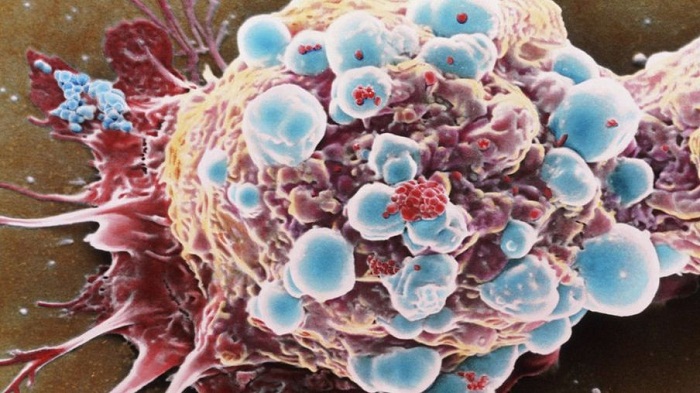The person can be put on a different type of chemotherapy only for the same thing to happen, sometimes repeatedly.
Robert Gatenby at Moffitt Cancer Center in Tampa, Florida, believes he has a better strategy: keep some treatment-responsive cells alive so they compete with the resistant cells and stop them from taking over. The premise is based on the idea that acquiring resistance genes must come at a cost to the cell and make them weaker in other ways.
“The goal is to enhance the value of therapy by using evolution in our favour rather than letting it beat us,” he says.
As a result, any non-resistant cells that aren’t killed off should be able to outcompete the resistant but weakened cells in check, by dominating the available resources.
Adaptive treatment
His team has developed an algorithm that adjusts the chemotherapy dose in line with the size of the tumour. The idea is to blast the tumour with a high dose when it’s growing rapidly, then reduce the dose as the tumour shrinks.
In mice with the equivalent of breast cancer, standard therapy was successful at suppressing tumour growth for 10 to 20 days, but after that the tumour grew rapidly. The evolutionary approach, known as “adaptive treatment”, kept tumours small for much longer, and after the initial 20 days only low doses were needed to prevent the tumours growing larger.
The mice on the adaptive therapy were observed for 155 days and during that period, therapy was stopped completely for 60 per cent of the animals, without the cancer progressing.
We have to move past the intuitively appealing idea of killing as many cancer cells as possible, says Gatenby. “When you do these high-dose therapies, which make patients very sick, there’s an implied promise that we’re taking our best shot at curing the cancer”.
His team has already begun a clinical trial testing the strategy in men with metastatic prostate cancer who have stopped responding to the first line treatment. Rather than scaling the dose of the new drug with the size of the tumour, they are using levels of prostate specific antigen (PSA) in the blood, a disease marker, to determine when they need to give treatment and how much.
Long game
“Our goal is to keep playing this game with the tumour to keep it sensitive, and as long as we do that the patient is alive and fine. Then they can have prolonged periods of time when they’re not getting any therapy at all.”
While the approach could be used on cancer at any stage of progression, it may be a more humane way of treating advanced cancers when aggressive treatment wouldcause a lot of discomfort, without much hope of remission. “We want to keep the patients alive and comfortable for as long as possible. Our goal of eradicating all the cancer has to change,” says Gatenby.
Mel Greaves at the Institute of Cancer Research in London says scientists are increasingly thinking of treatment of cancer as a Darwinian process. “It’s like antibiotic resistance,” he says. “If you apply very aggressive therapy, there’s a very strong selective pressure for the emergence of these mutants. You just clear the space and hey presto, they have the opportunity to take off. So unfortunately aggressive treatment does the opposite of what you want.”
But translating the approach to the clinic could be a challenge. “Are you going to persuade oncologists to adopt this treatment rather than more aggressive treatment? I don’t know,” he says.
Whether or not this particular approach is successful, Gatenby thinks applying evolutionary principles in medicine will prove useful in a range of diseases besides cancer. “You’re going to see it more and more in antibiotic therapy; I know it’s a topic of great interest in worldwide management of common diseases like malaria, tuberculosis and HPV,” he says.
More about:
















































